Hickory Flooring Offers Outstanding Resilience

Hickory is the hardest, densest commercially available hardwood native to North America. Its sapwood is usually wide and is off-white or white, contrasting with its darker heartwood.
Hickory wood is available in many different grades – from rough utility-grade planks used in shipping pallets to premium-grade wood with a polished, uniform appearance. Natural-grade Hickory hardwood has visible knots that give it a rustic look; select-grade Hickory, and select-or-better-grade wood will have fewer (if any) visible knots and a more uniform appearance.
The warm, light tones and soft contrasts of Hickory hardwood complement many interior design aesthetics, and the wood can be stained to a darker color. Hickory flooring is ideal for high-traffic areas, because of its durability and low maintenance needs.
Here are some things you should know about Hickory wood flooring:
Name: A member of the Carya genus, Hickory trees fall within two groups – True Hickory and Pecan Hickory, which bears fruit. The wood from these trees is nearly identical, and the terms Hickory and Pecan are often used interchangeably.
Origins: Most species of Hickory are native to the eastern United States, and their range extends into Mexico and southeastern parts of Canada. Between five and six species of Hickory are native to Asia. The Pecan Hickory tree thrives in regions with hot, humid summers and is the official state tree of Texas.
Janka Hardness Rating: With a Janka Hardness rating of 1820 out of 4000, Hickory is the hardest of the American hardwoods. The Janka Hardness scale is used to determine a hardwood’s resistance to dents, dings, and scratches. The test, which uses a 2” x 2” x 6” piece of a wood specimen and a steel ball, determines how many pounds per square inch of force will make the steel ball embed halfway into the wood. That result leads to the wood’s Janka Hardness rating. Woods at the low end of the scale will show more evidence of dings compared to those at the top. However, woods at the very top of the Janka Hardness Scale could be too difficult to cut for home applications.
Installation: Because of its density, Hickory can be difficult to cut and sand. Nailing or screwing may cause wood to split, so pre-drilling holes is usually recommended. Hickory swells and retracts as its moisture content changes, so boards may need time to adjust to a home’s humidity level before installation and finishing.



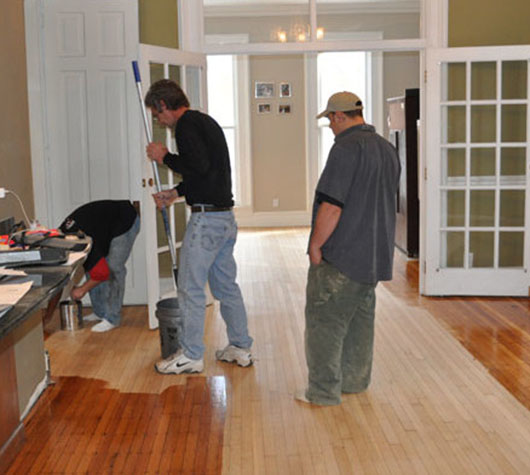 Repairing Scratched Hardwood Floors
Repairing Scratched Hardwood Floors
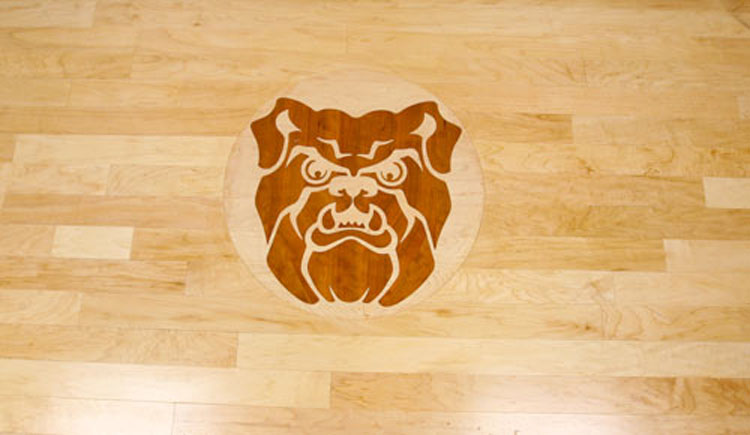 Hinkle Fieldhouse Butler Univers...
Hinkle Fieldhouse Butler Univers...
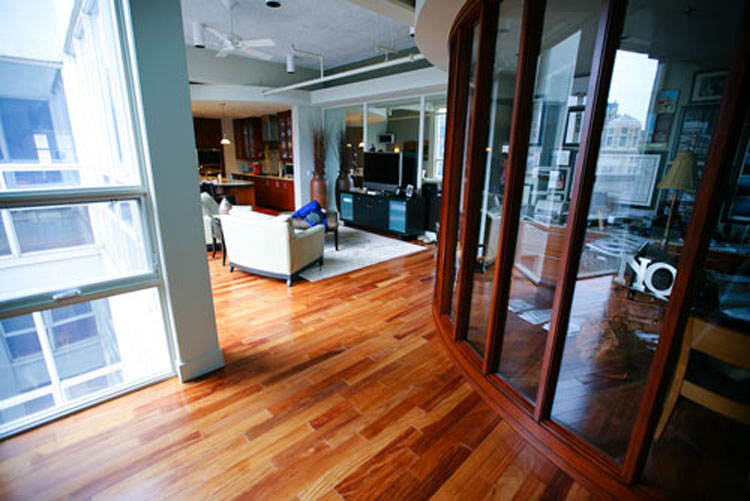 Penthouse Town Home Downtown Ind...
Penthouse Town Home Downtown Ind...
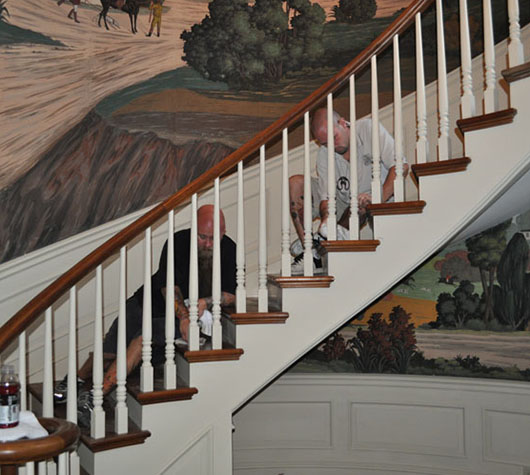 Antique Flooring Restoration
Antique Flooring Restoration
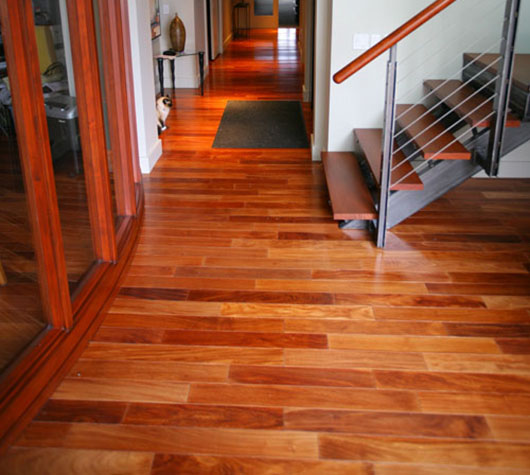 Brazilian Cherry Hardwood Floors
Brazilian Cherry Hardwood Floors